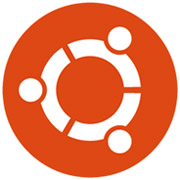
Canonical on Tuesday unveiled Snappy Ubuntu Core, a new rendition of Ubuntu targeting the Internet of Things.
Snappy Ubuntu Core offers a minimal server image with the same libraries as “traditional” Ubuntu, if we can call it that, but Snappy apps and Ubuntu Core can be upgraded automatically and rolled back if necessary.
This so-called transactional or image-based systems management approach is ideal for deployments that require predictability and reliability, according to Canonical.
Snappy runs on any device with an ARMv7 or Intel x86 processor and at least 256 MB of RAM.
This “can be anything from home appliances to networking equipment to controlling solutions for heating, air conditioning and security,” said Maarten Ectors, VP of IoT, proximity cloud and next-gen networking at Canonical.
Oh, and it can run on robots too, but “don’t think Star Wars,” he cautioned.
“Think useful robots,” Ectors told LinuxInsider, “like the Siralab Trasibot that soon will perform environmental studies in which industries and academic institutions can conduct pollution research by deploying Snappy Apps. Many other robots and drones are possible.”
Adding Snap to Software
Snappy Apps are a lightweight mechanism to package any software, Ectors said. Snappy Ubuntu images also can run inside virtual machines and in private clouds. Plus, Snappy Frameworks let Docker run inside Snappy Apps.
Snappy “is simply a package distribution/management for Ubuntu … with a transactional upgrade mechanism,” said Dan Kara, practice director of robotics at ABI Research.
That’s “‘transactional’ — as in succeed or be completely rolled back,” he told LinuxInsider. It simplifies the upgrade process and reduces the chances of rollback errors.
Docker and Security Issues
A number of security vulnerabilities have been discovered in Docker over the past few months.
However, Microsoft has found Docker robust enough to support the next release of Windows Server, in June, Kara disclosed, and it “is being employed in large, conservative businesses, and sectors such as finance and government.”
Snappy Ubuntu Core will ensure Snappy Apps “cannot harm the operating system and other Snappy Apps,” Canonical’s Ectors said. “Should there be bugs inside Docker, then Snappy Ubuntu Core is the easiest way to push bug fixes to devices running Docker images.”
Snappy Ubuntu Core “will not avoid a Shellshock or Heartbleed from happening,” he added. It “cannot magically avoid developers making any mistakes.” It will, however, enable the patching of “millions of devices in a secure way as soon as a fix is available.”
Developers are responsible for providing bug fixes for their Snappy Apps, including those containing Docker, Ectors noted.
What About the Competition?
Red Hat incorporated Docker in its Project Atomic well before Docker was incorporated into Ubuntu.
Then there’s CoreOS, an open source lightweight operating system based on the Linux kernel that provides only the minimal functionality required for deploying apps inside software containers. Sound familiar?
“Red Hat and CoreOS focus on the cloud,” Ectors pointed out. “Snappy Ubuntu Core is the only operating system that can run from a very small development board to the (US)$35 Odroid to network devices, robots, home appliances, to the biggest cloud — and have apps and an app store for any type of smart devices.”
Red Hat is “heavily focused on customers who value a standards-based approach to their architecture,” said Mark Coggin, senior director of marketing for Red Hat platforms business unit.
The Internet of Things is “more akin to enterprise IT, whose core tenets include system reliability, application integration, data integrity and security,” although it seems at a distance to be focused on devices and consumer technologies, he told LinuxInsider.
Red Hat Enterprise Linux “is well optimized to power the entire IoT architecture, from device to data center, and it is widely used across a variety of industries embracing this new architecture,” Coggin said. “Hence, there is no need to create an offering specifically for the device market.”





















































